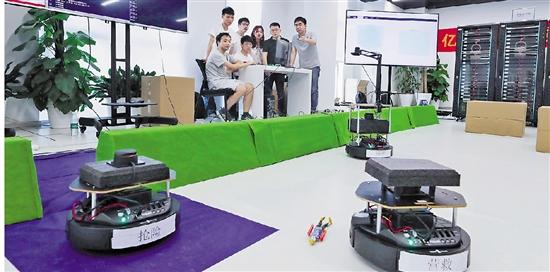world's largest brain-like computer developed in zhejiang

researchers from zhejiang university (zju) and the zhejiang lab test out an emergency rescue operation using robots powered by darwin mouse. [photo/ zj.zjol.com.cn]
a research team from zhejiang university (zju) and the zhejiang lab officially unveiled darwin mouse, china's first-ever brain-like computer that uses domestically designed brain-like chips, at a press conference in hangzhou, capital of zhejiang province, on sept 1.
darwin mouse is currently the world's largest brain-like computer in terms of number of artificial neurons. a total of 792 darwin 2 neural processing units (npus), zju's self-designed brain-like chips, are installed in the computer to support its 120 million artificial neurons and nearly 100 billion synapses – equivalent to the number in a mouse's brain.
the research team has also developed darwinos, an operating system for brain-like computers.
according to pan gang, zju professor and head of the research team, neuromorphic computing, a pioneering computer science field, imitates the structure and operating mechanisms of a real brain's neural network through hardware and software, constructing a brand new artificial intelligence system. compared with traditional computers, neuromorphic computers, or brain-like computers, can perform more complicated tasks and use less power.
the research team has successfully applied darwin mouse in a number of scenarios, including working with multiple robots to fight floods and carry out emergency rescues.
scientists believe that brain-like computers could be implanted in cellphones and robots in the future to expand the possibilities of artificial intelligence in daily life. brain-like computers can also serve as powerful simulation tools in neuroscientists' experiments to explore how brains function.
-
'nice' to meet you, hangzhou
may 6, 2024

